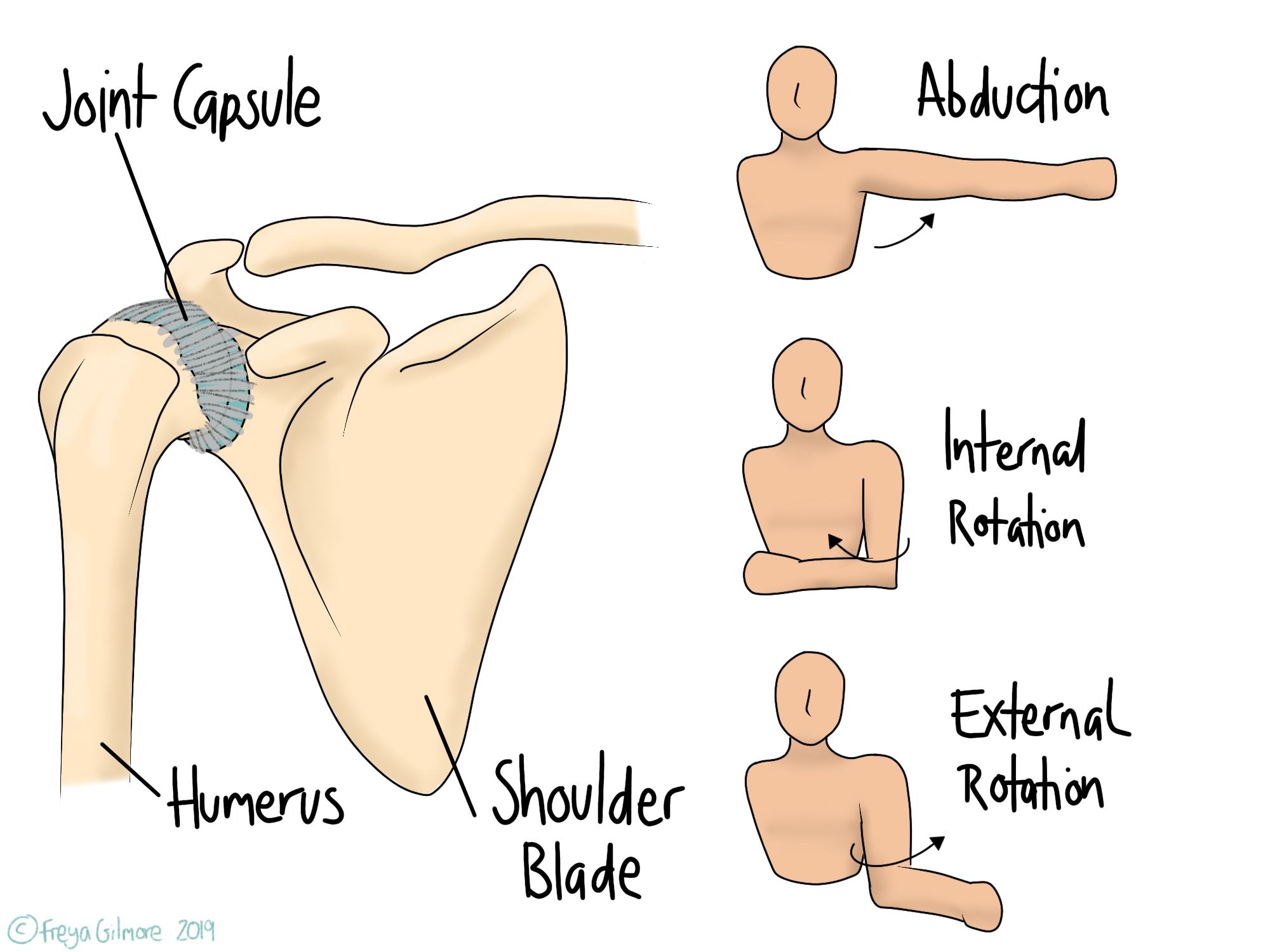Frozen Shoulder
Frozen shoulder is the common name for adhesive capsulitis, which literally means "sticky, inflamed capsule". The capsule is the fibrous outer layer of the joint, which normally allows a lot of movement. However, when it becomes "frozen", it causes pain and restriction. It often begins for no apparent reason, mainly affecting 40-60 year olds. However, sometimes it follows surgery, trauma, or immobilisation, and there are link to some other conditions and medications.

Symptoms of Frozen Shoulder
People often misdiagnose themselves with frozen shoulder- not all sore and stiff shoulders are caused by this. Only a few specific movements are limited, as illustrated above. Abduction is taking your arm straight out to the side, internal rotation is reaching across the body, like reaching for a seatbelt. External rotation is turning your arm away from yourself, like reaching into the back seat of a car.
One key feature is that symptoms develop over three stages, each taking months at a time.
- Freezing: stiffness develops over as long as 9 months.
- Frozen: restriction hits a plateau, pain may progress or level off too. This period can take 4-20 months.
- Thawing: symptoms begin to improve, taking 5 months-2 years to fully resolve.
Risk Factors
As mentioned above, those most likely to be affected are between 40 and 60 years old. Women are affected more than men, and risk is increased if you have diabetes. One study showed that almost a third of people who develop adhesive capsulitis have diabetes. Heart disease and problems with the thyroid also have some correlation with development of frozen shoulder.
If one shoulder is affected, the other is more likely to develop the same condition within 6 years. The explanation for this is not clear.
Other Considerations
Although the ball and socket joint is the one with the affected capsule, there are knock-on effects for the rest of the shoulder complex. The shoulder is typically very mobile, thanks to the shallow ball and socket- but the shoulder blade itself is responsible for a lot of movement too. The shoulder blade slides over the ribs and is supported by a number of muscles that attach to it. However, when the body thinks it needs to be protected, as with a painful shoulder condition like this, those muscles might clamp down to limit movement.
Managing Frozen Shoulder
Osteopathy is a recognised therapy for helping with frozen shoulder. Gently encouraging the shoulder back to movement may speed up the process, but we cannot skip any of the three stages with manual therapy. Some people respond well to steroid injections, which can be organised with your GP. You may find that supportive osteopathy helps to consolidate your improvement alongside it.
One of the most effective methods we have for symptomatic relief is to work around the shoulder blade. Encouraging the muscles mentioned above to relax will allow more movement from the shoulder as a whole. Although this approach does not directly treat the affected tissues, it does take the strain off the rest of the body. The intention here is to prevent secondary aches and pains from developing as well as giving you a little more reach for those affected movements.